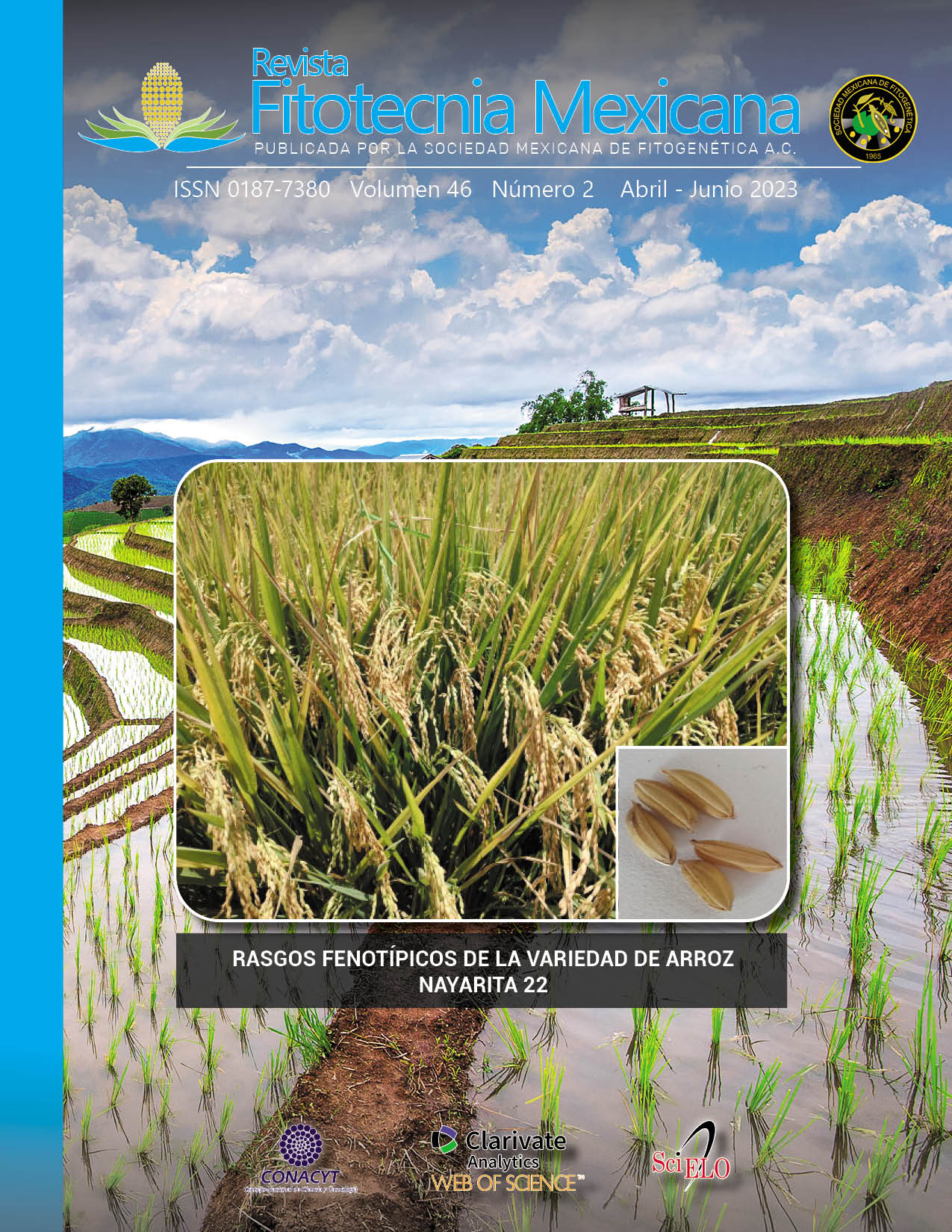EVOLUTION OF THE FUNGUS Puccinia striiformis W. CAUSING WHEAT YELLOW RUST IN MEXICO AND IDENTIFICATION OF SOURCES OF RESISTANCE
Main Article Content
Abstract
Yellow rust, caused by the fungus Puccinia striiformis W., remains a major wheat disease in El Bajio region, Northwestern Mexico and the High Valleys of central Mexico. During the 2014 cycle, an epidemic of yellow rust of wheat was observed in the High Valleys of Mexico, from where samples were taken and analyzed in differential lines in greenhouse. Results indicated that virulence combinations of Yr1, Yr2, Yr3, Yr6, Yr7, Yr8, Yr9, Yr17, Yr27 and Yr31 were identified for the first time in Mexico. These combinations were represented by the races MEX14.122, MEX 14,501, MEX14.191, MEX14.146, MEX14.157 and Mex14.300 with virulence to Yr1. Based on seven differential lines, 25 races were identified, which meant a wide diversity in the population of P. striiformis present during 2014. The combination of virulence of Yr27 and Yr31 in the populations of the pathogen represented by the MEX14.191 race, among others, caused the variety Nana F2007 to be shown as susceptible. Results indicated a continuous evolution and accumulation of virulence in the races of P. striiformis of aggressive lineage adapted to temperatures above 18 °C during the incubation period. From 2014 to 2022, MEX14.191 remained as the predominant race in both El Bajio and the High Valleys. Greenhouse and field tests showed that 65 % of bread wheat lines from CIMMYT 48-IBWSN were resistant, and their resistance was more effective in adult plant.

